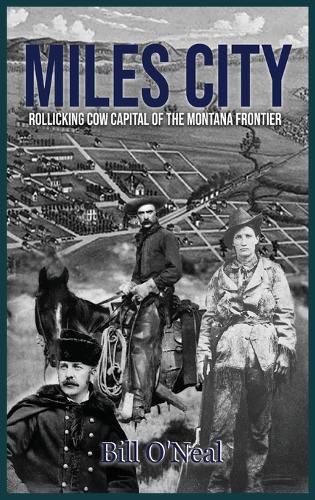Readings Newsletter
Become a Readings Member to make your shopping experience even easier.
Sign in or sign up for free!
You’re not far away from qualifying for FREE standard shipping within Australia
You’ve qualified for FREE standard shipping within Australia
The cart is loading…






This title is printed to order. This book may have been self-published. If so, we cannot guarantee the quality of the content. In the main most books will have gone through the editing process however some may not. We therefore suggest that you be aware of this before ordering this book. If in doubt check either the author or publisher’s details as we are unable to accept any returns unless they are faulty. Please contact us if you have any questions.
During its heyday as a cattle town, Miles City called itself the "Cow Capital of the World." Later, after adjacent Fort Keogh was converted to an army remount depot, Miles City proudly shared its identity: "This is Uncle Sam's horse ranch. The employees are all civilians, and the wranglers are cowpunchers and expert riders." Later still, a wild method of gathering and selling horses off the range produced the most recognized nickname of all: "The World Famous Miles City Bucking Horse Sale."
In 1884 the Montana Stockgrowers Association was organized in Miles City, which hosted the event for thirty-four years. Stock thieves plagued open range ranchers, and young Theodore Roosevelt impulsively called for "a war against rustlers." But pioneer Montana cattleman Granville Stuart already was quietly organizing deadly retaliation, and soon his fourteen "Stuart's Stranglers" killed nineteen rustlers in the countryside.
Fort Keogh at its height boasted a garrison and civilian employees totaling nearly 1,000 men. Every night the troopers caroused at the saloons and parlor houses of Miles City. There were frequent brawls involving fists and boots, but deadly encounters were rare. There was one fatal shooting, one throat-cutting, and one lynching. Otherwise, troopers and civilians enjoyed hard-drinking fun. Fort Keogh became known as a party post, complete with balls and parties for officers and ladies - including a memorable evening with John Philip Sousa and his US Marine Band. Meanwhile, Miles City became famous as a good time town, with street dances and frequent parades.
Miles City remains a fun-loving town today, with the "World Famous Miles City Bucking Horse Sale" still its most famous event. The Range Riders Museum displays a wealth of artifacts from the Wild West days, and throughout the town venerable buildings prove that historic architecture is our most tangible reminder of the past. Miles City still is a Western town for cowboys and cowgirls.
$9.00 standard shipping within Australia
FREE standard shipping within Australia for orders over $100.00
Express & International shipping calculated at checkout
Stock availability can be subject to change without notice. We recommend calling the shop or contacting our online team to check availability of low stock items. Please see our Shopping Online page for more details.
This title is printed to order. This book may have been self-published. If so, we cannot guarantee the quality of the content. In the main most books will have gone through the editing process however some may not. We therefore suggest that you be aware of this before ordering this book. If in doubt check either the author or publisher’s details as we are unable to accept any returns unless they are faulty. Please contact us if you have any questions.
During its heyday as a cattle town, Miles City called itself the "Cow Capital of the World." Later, after adjacent Fort Keogh was converted to an army remount depot, Miles City proudly shared its identity: "This is Uncle Sam's horse ranch. The employees are all civilians, and the wranglers are cowpunchers and expert riders." Later still, a wild method of gathering and selling horses off the range produced the most recognized nickname of all: "The World Famous Miles City Bucking Horse Sale."
In 1884 the Montana Stockgrowers Association was organized in Miles City, which hosted the event for thirty-four years. Stock thieves plagued open range ranchers, and young Theodore Roosevelt impulsively called for "a war against rustlers." But pioneer Montana cattleman Granville Stuart already was quietly organizing deadly retaliation, and soon his fourteen "Stuart's Stranglers" killed nineteen rustlers in the countryside.
Fort Keogh at its height boasted a garrison and civilian employees totaling nearly 1,000 men. Every night the troopers caroused at the saloons and parlor houses of Miles City. There were frequent brawls involving fists and boots, but deadly encounters were rare. There was one fatal shooting, one throat-cutting, and one lynching. Otherwise, troopers and civilians enjoyed hard-drinking fun. Fort Keogh became known as a party post, complete with balls and parties for officers and ladies - including a memorable evening with John Philip Sousa and his US Marine Band. Meanwhile, Miles City became famous as a good time town, with street dances and frequent parades.
Miles City remains a fun-loving town today, with the "World Famous Miles City Bucking Horse Sale" still its most famous event. The Range Riders Museum displays a wealth of artifacts from the Wild West days, and throughout the town venerable buildings prove that historic architecture is our most tangible reminder of the past. Miles City still is a Western town for cowboys and cowgirls.